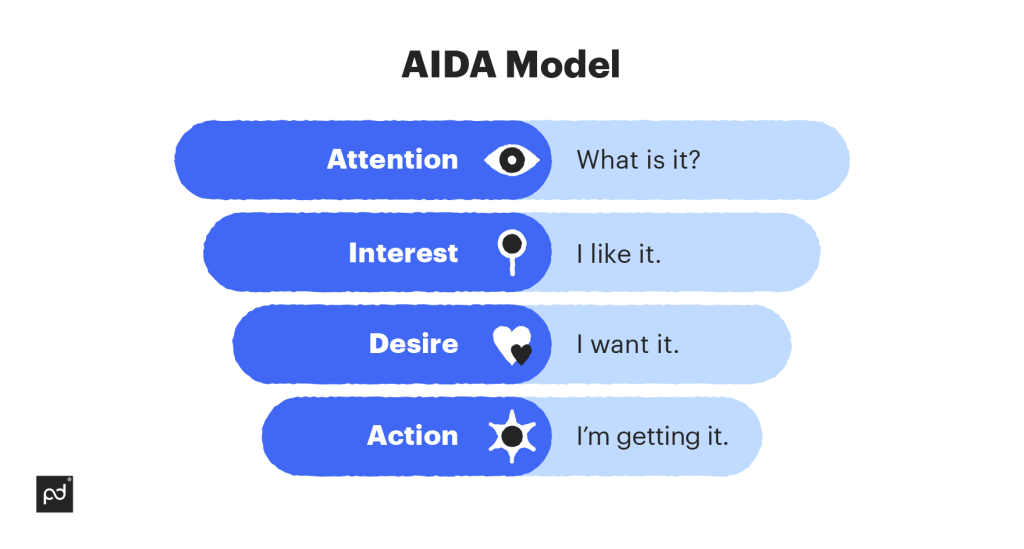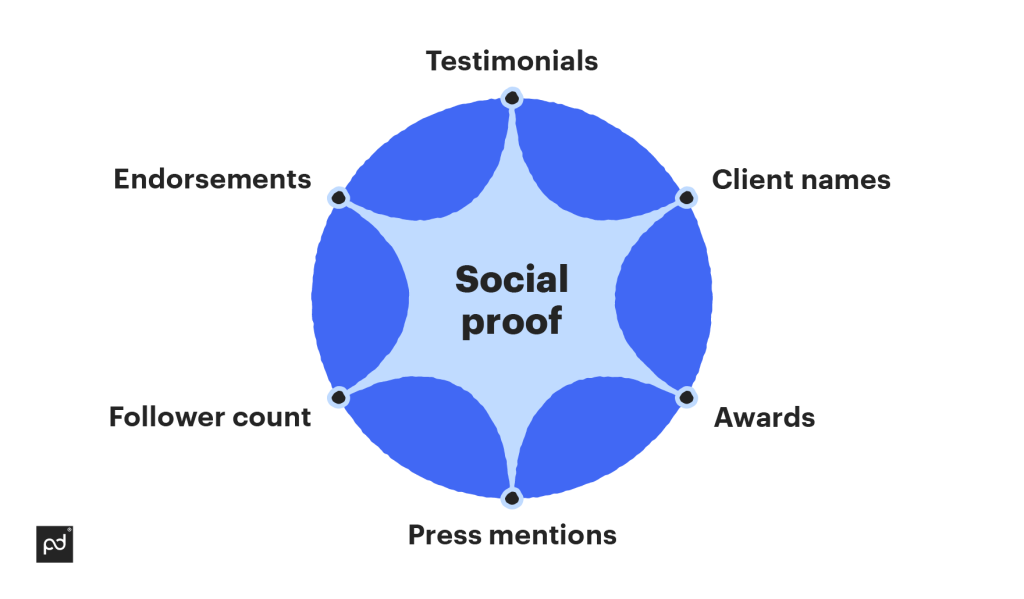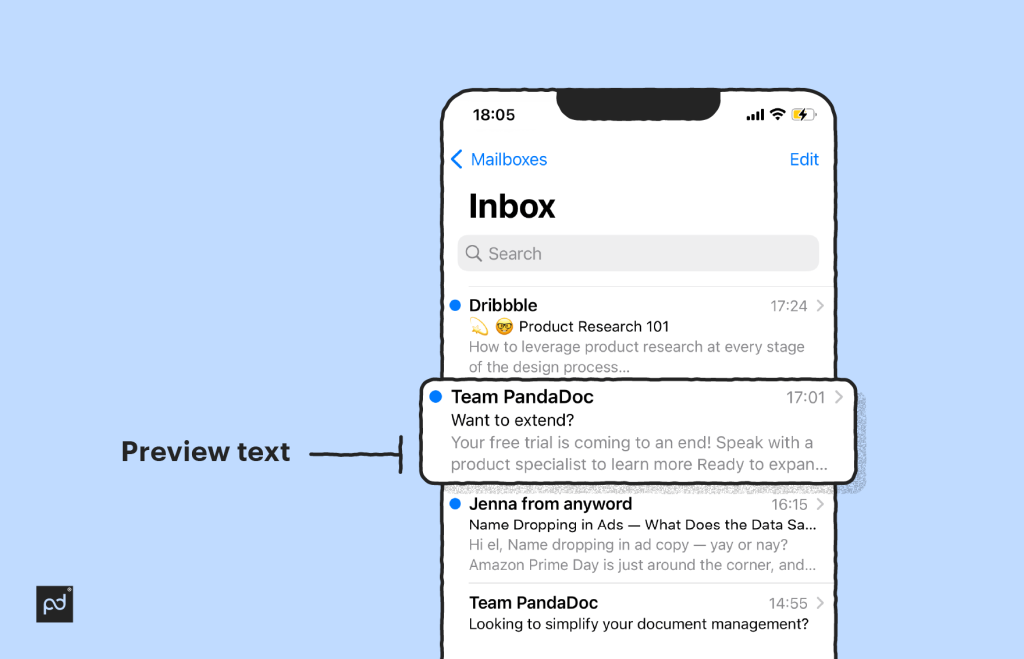According to a recent study published by Gartner, the open rate for sales email is just 23.9%.
This means the remaining 76.1% of sales emails either get lost in the spam folder or are tossed in the (digital) bin.
Being a part of the coveted 23.9% might seem like a difficult door to get your foot into.
However, seeing as email marketing is one of the most effective ways of converting a prospect (especially when compared to sales calls that have a call-back rate of less than 1%), it’s still an important door nonetheless.
So, let’s say you make it. You capture the reader’s attention and they open your email. What are you going to do next?
The aforementioned door is only the starting gate — that finish line you seek is still down the field.
In this article, we’ll share a roundup of our 15 best tips for writing effective sales emails that actually get a response.
1. Research target audience (Remember: personalization is key)
Research is the crux of any marketing campaign, and email marketing is no exception. You can’t hit your audience with whatever you like and then see what sticks.
The truth is, your audience will most likely consist of people who have different attributes and qualities. Each of them possesses unique pain points, interests, and buying patterns.
So, writing one email and sending it across to a unique list of subscribers won’t do the trick. What you need to do is research your audience as much as you can.
Understand their pain points, their struggles, the language they use, what makes them happy, what makes them sad, what makes them tick, etc.
Once you have all the data on hand, begin segmenting audiences into different buyer personas and then start targeting these personas individually.
One great example of email personalization usage comes from the American Marketing Association (AMA), who segmented a list of over 100,000 email recipients based on behavioral insights.
Read more about the case study here: Marketers using AI-powered newsletters.
Understanding the behavioral patterns and personality traits of your audience is a sure-shot way of bringing personalization to your brand. However, that’s just the tip of the iceberg.
You can delve further into personalization by using the recipient’s name in salutations, giving discounts for special days (like birthdays and anniversaries), recommending items to buy based on things they have in the cart, etc.
In fact, you might’ve seen some of your favorite brands use these same tricks in the past.
Here’s a handy guide that’ll give you more context on personalization and will also help you understand how to do it right: 6 ways to personalize your sales prospecting emails.
2. The AIDA method
The AIDA method (which stands for Attention, Interest, Desire, and Action) is an age-old copywriting trick that works till today.
Here’s a bit about AIDA before we delve further: it works like a funnel, and is not restrictive to only email copywriting (many marketers use it for other interests too).
In fact, it’s not even necessary that email copywriters use it, but it serves as a tried and tested guide, so many of them choose to use it on different occasions.
Through AIDA, you get the reader’s attention about your product. If the product fits the reader’s aspirations, they become interested in it, and soon begin to desire it.
All of this leads to an action, which is buying the product.
Over the years, there have been a few changes to this model, and some marketers have changed the attention stage to the awareness stage, and the desire stage to the decision stage.
However, the effect remains the same: getting your audience hooked on your product (through emotional and logical reasoning) which leads them to buy it.
Here’s how you can use the AIDA model in a sales email:
- Attention: In a sea of emails that are being sent back and forth daily, subject lines are the best way to catch the audience’s attention. If you have the data to make it personalized, then by all means go for it. Also, quick add: subject lines that look like they have been written by a human (and not software) generally have better results.
- Interest: Generate interest by showing the reader how your product will address their pain point(s) — paint a colorful picture by using case studies or customer stories.
- Desire: At this stage, bank on your social proofs to illustrate your product’s USP. For example, showing client testimonials, or telling the reader how many people have bought the product is a great help in converting prospects. You can also add time-sensitive offers and discounts at this step.
- Action: The action stage is where you’ll put your CTA — whether it is to hop on a quick call, or buy the product, or fill out a form — you need to be clear with your audience on how you would like them to take this conversation across the finish line. A clear, crisp CTA works wonders.

3. Create a short and catchy subject line
You heard this one before, but we’ll say it again loud and proud: subject lines are the make or break of your email marketing campaigns.
Why? Several reasons:
- They are the first impression of the email (and, by extension, your brand).
- They set the tone, telling the reader if the email is worth reading (or not).
- They are a way to stand out from the thousands of sales emails in your prospect’s inbox.
- They can build curiosity (which will lead to better open rates).
So, TL;DR, subject lines are a chance for a mini-conversation themselves, an appetizer to get to selling the main course. But no pressure.
Here are a few ways through which you can create subject lines that stand out from the rest:
Keep it short and catchy
The pro (and con) of subject lines is that you only get to use a maximum of sixty characters before your email provider cuts off whatever else you had to say.
So, construct your subject lines in a brief manner and make them memorable.
Add the right keywords
Many people are in the habit of filtering emails by keywords.
So, for that subsection of consumers, adding keywords seems like the most sensible thing to do to stand out from your competitors.
Add a dash of personalization
A little dose of personalization never hurt anyone, so maybe you could try an email or two (or a hundred) with the recipient’s name in the subject line?
Any other type of personalization will do, too. We’re not all that fussy — but a little sassy can go a long way, if applied right (see above under “catchy”).
Mention the value you’re bringing
Many people wrongfully talk about their products in the subject line. Here’s a mantra: always create the subject line for the user’s benefit, not for your own.
But here’s a trick to do both: Mention the value your product will bring into their lives (instead of writing about the product itself). That way, you can talk about your product without actually mentioning your product.
We have also linked a HubSpot guide that has 64 sales email subject lines which will help boost response rates: Get it here.
4. Don’t forget visuals
Sales emails (if long) can often get boring and monotonous to read, even if the offer that you’re presenting is compelling.
So the only way to break away from the monotony is to add visuals in your sales emails, as they can help you pique the interest of the reader.
These visuals can be in the form of images, GIFs, UGC, videos, cinemagraphs, infographics, etc. Just as long as they’re relevant, they’ll do the trick.
Also, important note: make sure that these visuals (along with your entire email) are mobile-friendly, as that’s the platform your prospect is more likely than not is going to see from.
5. Write a bold copy. Get straight to the point
Say you’ve created a picture-perfect subject line that has the salespeople’s input, prospect name, and value proposition. (Yay, btw!).
But if your intro is lacking, your outreach is weak, and the body copy just drones on, then the prospect will jump (and fast).
So, here are a few tricks to write the perfect sales email.
First and foremost, let’s address the opening line
Opening lines are your hook, so make sure you settle on something hook-worthy.
Try avoiding the generic opening liners like “Hi, this is…..” Instead, opt for something that’ll make you stand out.
Keep it brief and get to the point
No one wants to read a sales email that is six paragraphs long; make sure you cut to the chase and get on with it.
Try to wrap it under four short paragraphs, and if you need to attach some important information, make a document out of it.
Be specific
While creating an email campaign, your biggest priority should be to target the pain points of your customers accurately.
If you know their pain points, then don’t choose to go ahead with vague statements — be extremely specific and deliberate with what you say.
6. Address solutions to the problem
Perhaps this is an extension of our previous point, but it’s important in its own right. When you write a sales email, you don’t want it to be all about you.
Rather, you should make the sales email entirely about your prospects. Discuss their struggles, their pain points, what benefits can they achieve, etc.
Solutions come first; sales should be an afterthought.
That said, make sure that when you discuss the benefits of your product, you add a USP (unique selling proposition) that tells your consumers what exact benefit they would be getting from your product/service.
7. Add a clear CTA. Also, A/B test it regularly
CTA, also known as call-to-action, is the closing line of all your sales emails. It’s also the only line that will direct your prospects on how to quickly jump on the conversation train ahead.
When creating CTAs, make sure you write them as clearly as possible (so that it doesn’t lead to any confusion).
Also, make sure that these CTAs are short and sweet — if you want them to arrange a call, mention it; don’t write paragraphs on how the call will change the way they do business.
Most importantly, if you can, A/B test these CTAs regularly.
Best to make the maximum bang out of the bucks you spend on lead generation campaigns.
Here’s how to write a compelling CTA: 23 powerful email call to action examples to make your prospects respond.
8. Email signatures are a must
Many sales professionals agree that email signatures are an absolute must if you wish to show a professional image of yourself in the eyes of the prospect.
So, make sure you go ahead and add your email signature at the end of a sales email.
We’ve jotted down a list of a few things any email signature should include: a clean and minimalistic design, your company name and address, a number if you are willing to receive phone calls, links to your social media (like LinkedIn), and email ID.
While we’re on the topic of signatures, this is a friendly PSA that you can also avail the service of an eSignature with platforms like PandaDoc.
Apps like Gmail can be customized too to insert email signatures after your mail copy.
And if you’re interested in reading more about email signatures, then here’s a guide that contains 10 email signature examples and tips.
9. Add social proof (if you can)
Social proof is your pot of gold and you should use it as such. Here’s why:
- It helps you stand out from your competitors.
- It adds authenticity.
- It builds credibility.
- It shows other people trust you too.
- It shows that you’ve delivered excellent results for other brands too.
So, what constitutes social proof? Anything from testimonials or follower count, to client names and press mentions, to awards and endorsements — anything that adds credibility to your business is your social proof.
Here’s the how, when, and why of adding social proofs to your email marketing campaign: how to use social proof in your email marketing campaigns.

10. Build on urgency
Have an enticing limited product offer that you’re dying to tell your customer about? Well, let them know — that’s what sales emails are there for anyway!
Urgency is one of the most common tactics used in sales emails, and they’re used in a plethora of ways, from time limits on buying something, to limited quantities available, to everything else in between.
However, as eye grabbing as these offers might be, just make sure you use them at the right place and at the right time.
Constantly using urgency to sell your product might soon become the classic tale of the boy who cried wolf — people will stop believing in it sooner than later.
So save the urgency-themed offers for the truly special occasions that actually deserve them.
11. Preview texts are just as important
Preview texts are the little snippets of information that appear below the subject line before you actually click on the mail.
It’s sort of like a meta description about the mail and gives you a brief overview of what the mail is going to be about.
Oftentimes, many people let the preview text remain just the same as the body of the text, not realizing that it can in fact be customized and personalized according to your preference.
Here’s a quick guide on how you can add (or hide) preview texts into emails: how to insert preview text into email.
In the meantime, let’s write down a few ground rules about preview texts:
- The character length usually cuts off at 90 characters, so make sure you expand on the email within that space.
- Add personalization — hit the right pain points and mention the prospect name (it’ll increase the chances of the email getting opened).
- Get creative with it — try and test a bunch of different preview texts to see what works and what doesn’t.

12. Mention referrals (if that’s the path being used)
Oftentimes it happens that the person you’re mailing has been introduced to you by someone else.
In these situations, always mention the name and relation of the person who made the introduction to (hopefully) get a little extra recognition right off the bat.
Worst case scenario, even if they don’t reply, at least they’ll know how you got their email address and you’ll know that you tried.
13. Proofread everything you send
Typos happen to the best of us, and that’s okay.
But when sending a sales email, you want to put the best image of yourself in the eyes of your prospective consumer, so always deliver impeccable language and grammar, full stop.
To avoid any silly mistakes, make sure you proofread everything.
Even better, send your mails to a professional proofreader who has the expertise of catching even the slightest of errors.
But if you don’t have a proofreader to catch your back, then reading emails out loud or on a different device almost always does the trick.
It’s much easier to catch your errors when you view things from a different perspective.
Also, quick note: make sure you write in a jargon-free, easy-to-read language. Unless, of course, you know for a fact that your audience understands the jargon.
14. Follow up. Follow up. Follow up
If location, location, location is the mantra of real estate, then follow-up, follow-up, follow-up is the mantra of email campaigns.
According to research done by Ample Market, follow-up emails can be attributed to the success of outbound sales sequence by 50%.
There’s no limit to how many follow-up emails you can send, but most salespeople said that they usually go for two follow-ups.
However, we suggest going over for at least four follow-ups, unless you’ve heard a definitive no (make sure you space these follow-ups between a span of 3-4 days).
Keeping that in mind, here’s how to make your follow-up emails more interesting:
Add value
Instead of sending a strict one-liner email about the status of your CTA, send the prospect a little something of value — this could either be something entirely for their benefit (like an ebook, checklist, a free resource, etc.).
Or, just mention the value you can provide for them.
Keep it short
Your prospects are most likely busy, so make sure that you don’t occupy too much of their time. Keep the follow-up short and sweet, and end the email with a clear CTA.
Personalize the message
As always, bring your A-game of personalization. Don’t overdo it, of course, but letting your prospects know that you understand where they’re coming from adds relatability (which indeed tilts things in your favor).
15. Be creative!
Last, but not least, be creative with your emails! This email campaign is truly and uniquely your own, so make sure you own it in the best way possible.
It may be that you have created a terrific campaign that goes beyond the scope of anything mentioned in this article, so feel free to take whatever we say as suggestions, instead of hard-hitting facts.
Whatever you feel is best, that’s the direction you should go in.
A few dos and don’ts
Don’t become spam
We know we mentioned that there are no rules when it comes to follow-ups, but sending too many follow-ups and too soon can make emails end up directly in the spam folder. Worse yet, they can unsubscribe from your list.
Do follow “The Email Marketing Show”
We have an excellent resource to share with you, and that’s the Email Marketing Show.
It features the A to Z of email marketing and will surely have something for every doubt that pops in your mind. Find a podcast link here.
Don’t forget your new subscribers
We understand that every sales email is structured with a sales process in mind, but while nurturing old leads, it can be easy to forget the new subscribers.
So this is a friendly reminder so that you don’t forget the new subscribers that join your list.
Do optimize your emails
Email optimization is one of the best ways to get better rates of people actually opening those emails.
So make sure you A/B test every CTA, subject line, and preview text.
See what sticks with the audience and what doesn’t. And then, create the perfect sales email.
Sales email examples
Template #1
Subject line:
Interested to join the Art Decor Show?
Preview text:
It’s happening next Saturday. Should I hold a seat for you?
Email copy:
Hi [Name],
I noticed both of us are a part of the Art & Decor Community on LinkedIn, and you recently wrote a post about wanting to go to a few art shows in Toronto.
I’m heading the Art Decor Show this year, and it’s happening in Toronto too (just next to the Royal Ontario Museum). It’s scheduled for next Saturday, between 2:00 pm to 4:00 pm.
I thought you might be interested in paying a visit. Should I send over the registration form?
Kind Regards,
[Name]
[Email Signature]
Template #2
Subject line:
Got your contact through [Name].
Preview text:
They mentioned you wanted to get your car fixed after an accident.
Email copy:
Hi [Name],
I got your contact through [Name of mutual friend], who told me that a tree banged up your car and you wanted to get it checked.
I run a repair shop and would be happy to lend my services. Since you’re a friend of [name of mutual friend], I would also knock off 10% from the price I usually quote. However, I’m leaving for the weekend and will only be able to come over for an inspection today or tomorrow.
Please let me know if you’d like me to drop by your home to see if I can help.
Thanks,
[Name]
[Email Signature]
Check out more sales email templates here: 10 sales email templates to try in your next outreach campaign.
In sum
Everyone knows that email marketing is one of the most effective ways of converting a prospective customer.
But have you thought of what you’ll do once you have the customer in hand?
You need to have a quick and smooth onboarding process that doesn’t create any bumps along the way. And something like manual contracts won’t cut it.
Especially these days since everyone is working remotely.
We’ve come up with an effective way of onboarding new clients in a way that doesn’t affect their daily workday routines.
In fact, they wouldn’t even have to leave their desks to get contacts signed. Learn how PandaDoc can help you with client onboarding.
Originally published Jun 19, 2018, updated Jul 12, 2022
Disclaimer
PandaDoc is not a law firm, or a substitute for an attorney or law firm. This page is not intended to and does not provide legal advice. Should you have legal questions on the validity of e-signatures or digital signatures and the enforceability thereof, please consult with an attorney or law firm. Use of PandaDocs services are governed by our Terms of Use and Privacy Policy.
